This article has been taken from the latest Fleet News special report Electric Fleet: Taking Charge. It is sponsored by Allstar, Athlon, Northgate and Shell Fleet Solutions.
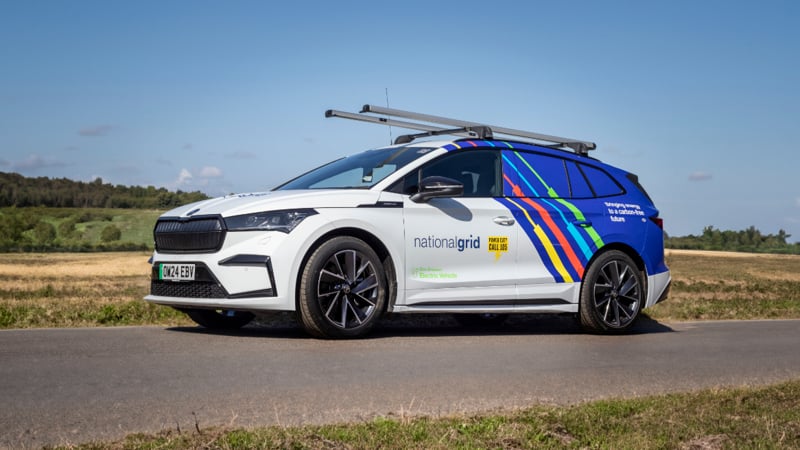
While many organisations are forging ahead with electrifying their car fleets, the transition to zero emission vans is lagging behind.
This delay is down to several factors which make it more difficult to incorporate electric light commercial vehicles seamlessly and efficiently into a fleet operation.
As Mick Farmer, head of fleet at Anglian Water, neatly surmises: “Cars look after themselves, vans are the conundrum.”
Earlier this year the Transport Research Laboratory (TRL) published Government-commissioned research to outline the enablers and barriers to electric van adoption.
Obstacles identified included that current electric vehicles did not meet operational requirements and there was not a cost-effective and feasible way to charge them.
These challenges led to the creation of the Zero Emission Van Plan, headed by the British Vehicle Rental and Leasing Association (BVRLA), which brought together organisations such as the Association of Fleet Professionals (AFP), Logistics UK, Recharge UK, EV Café and Fleet News.
The Van Plan’s key asks cover a range of requirements deemed essential to support continued uptake in the electric van market, including increased fiscal support, improved support for public and private charging, and to remove regulatory barriers on 4.25-tonne electric vans.
“A giant leap is needed to move the market to where it needs to be,” says the Van Plan.
“Without immediate support the transition will continue to stall or even grind to a halt, making the targets in later years impossible to reach.”
In this feature we look at three of the major challenges – charging, legislation and government policy, and vehicle suitability - faced by electric vans and what is being done to overcome them.
Charging
One of the major obstacles identified in the TRL research was that participants felt there was not currently a cost-effective and feasible way to charge electric vans.
Many organisations do not use a back-to-depot model where van are charged on-site overnight. This means they would be reliant on public or home charging.
Charging at home is not always possible as the employee may not be able to have a wall box installed at their property, or may not be willing to park their van on their driveway if it means leaving their own car on the road.
Some respondents to the research felt public charging is expensive and would negate any cost savings achieved by the overall lower cost of electricity compared with petrol or diesel.
Other challenges included a perception that charge points for business vehicles are hard to find, may not be in working order, may not have space suitable for large vans and may require waiting for long periods of time.
To tackle these issues, Centrica has a priority list of charging preferences with the emphasis on minimising downtime rather than simply minimising the cost of charging:
- Home charging – the cheapest option with no downtime.
- Virtual home charging – using a local partner to charge the van overnight near the driver’s home. “We are working with several partners to deliver this,” says Rob Simister, director of fleet operations at Centrica.
- Public rapid charging – the least attractive of the four options but, again, focus remains on minimising downtime. For example, Centrica is partnering to install/utilise drop box lockers at rapid charging sites for engineers to collect parts for their next jobs while charging – for example with Gridserve in Colchester. Engineers have 15 minutes to load up but, currently, the lockers are often located nearer to their homes than a rapid charge point.
- Private rapid charging – also known as shared charging – is gathering momentum and has multiple benefits for both the organisation offering its charge points and the fleets using them. The host organisation will create an extra revenue stream by charging fleets to use its infrastructure, while visiting fleets benefit from the convenience of the charge points, as well as reducing the capital expenditure and operational costs associated with developing and maintaining their own workplace charging capabilities. It also helps mitigate capacity constraints, both in terms of available space and energy demand, at their own depots.
AFP research found 58% of van fleets wouldconsider sharing their depot or public charging with others to make electrification more practical.
Following the launch of a committee last year designed to promote shared charging between its members, the AFP last month introduced a white-labelled platform allowing depots to share charging facilities with fleet users.
The platform, created by technology start-up Evata, will be made available for AFP members through an online portal, while drivers will be given a self-serve mobile app for use when accessing shared infrastructure.
One of the pioneers of depot charging partnerships is First Bus, which currently has nine depots with 150kW chargers throughout the UK which can be accessed by fleets when they buses are away – typically between 6am and 10pm.
“First Bus itself is committed to achieving a fully zero-emission commercial bus fleet by 2035,” says Faizan Ahmad, decarbonisation programme director at First Bus.
“Beyond our own transformation, we believe in sharing knowledge and collaborating with the industry to advance decarbonisation efforts more broadly.
“By opening up our depot charging infrastructure to communities and other organisations, we are putting this principle into action.”
He adds the response from fleets has been “overwhelmingly positive”, as they have been drawn to the high availability, large bays and competitive pricing.
Major fleets which are using First Bus’s shared infrastructure include Centrica, Openreach, DPD and Police Scotland.
Successful implementation of shared charging requires careful consideration of key attributes for both host depots and visitor fleets, says Cenex.
Host depots must be strategically located, have adequate capacity, offer reliable and compatible charging infrastructure, and demonstrate a commitment to sharing.
Several barriers exist to the widespread success of shared charging initiatives, says Cenex.
Key challenges include initial investment costs, secure access and data privacy concerns, while operational complexity, such as managing schedules and resolving conflicts between visitor fleets, must also be addressed.
Cenex is part of the Paua PINS (Private Infrastructure Network Solution) project, which also involves Paua, Oxfordshire County Council and Suffolk County Council.
The goal of the project is to show how businesses can generate additional revenue by allowing other fleets to charge at their depot, as well as demonstrating how shared charging can cut costs and increase access to charging infrastructure.
Legislation and government policy
Legislation and government policy is having an enormous influence on fleet uptake of electric commercial vehicles.
Some issues, such as the clarification given earlier this year over the date when new internal combustion engine (ICE) vans will no longer be sold, have provided certainty for fleets while other unsettled issues, such as the treatment of 4.25- tonne LCVs, are continuing to cause uncertainty.
At the end of last year, the Government held a consultation which involved looking at issues such as whether tachographs are needed in electric vans up to 4.25t, drivers’ hours regulations and their MOT regime.
Currently, commercial vehicles weighing more than 3.5t are subject to the same heavy vehicle testing system as HGVs.
“The outcome of the Government consultation is yet to be published and until that has, many fleet operators will remain reticent to do a wholesale shift to electric,” says Simon Staton, client management director at Venson Automotive Solutions.
In April, the Government confirmed that new petrol, diesel and hybrid vans can be sold until 2035, at which point only zero emission vans will be available.
In the same announcement, it also made changes to how the ZEV (Zero Emissions Vehicle) Mandate is being implemented.
Both of these actions could affect how and when fleets procure electric vans.
Potentially, it could mean organisations decide to delay their transition, but fleets are being urged to continue to progress with their plans and use the extra time wisely.
“From our experience, this policy change isn’t delaying the transition to electrification,” says Michelle Miles, head of Progreen by Prohire.
“Most businesses have already accepted that this change is inevitable and are actively working towards it.
“Many organisations originally aligned their environmental goals and ESG commitments with the 2030 deadline, and we haven’t seen any of our customers revise those goals in response to the Government’s extension.
“In fact, ESG and sustainability performance are now major factors in competitive tenders.
“A strong sustainability plan can be the deciding factor in winning or losing a contract. So, even with more time available, the pressure from customers and markets is keeping the momentum going.
“Businesses that don’t act risk losing out to competitors who are further ahead in their electrification journey.”
The revised deadline will give fleets more time to review and trial potential vehicles that could replace their ICE vans, says Venson’s Staton.
“It is expected that there will be more models coming on to the market, EV and hydrogen, before 2035, providing greater choice to find appropriate solutions,” he adds.
“They will also have more time to consider solutions to managing the operational aspects of their fleet such as charging infrastructure, driver training and what changes to or new policies and procedures might be required for the management of the fleet and the drivers.”
The changes to the ZEV Mandate could also affect procurement practices for fleets.
Last year, some van manufacturers were insisting that fleets ordering diesel vans also had to take a proportion of fully-electric vans to help them meet their ZEV registrations target.
However, the way the mandate has been restructured means this situation is less likely to occur again.
Last year, OEMs were able to only include van sales towards their targets, but those which also make cars are now able to use their electric car registrations to offset their LCV figures.
“The extension to the ZEV Mandate should encourage manufacturers to soften their approach regarding the percentage of EVs they require fleet operators to take, especially until more suitable commercial product becomes available,” says Simon Simmons, LCV consultant at Alphabet (GB).
Vehicle suitability
Another traditional barrier to electric light commercial vehicle uptake is that current vehicles are not fit for purpose – whether because of range, payload or body style.
But there are plenty of signs this is changing, through the efforts of manufacturers by producing more capable vehicles or through fleets innovating.
Analysis by Leasing.com has found the average WLTP range of a new electric van has increased 38% in the past five years, going from 144 miles in 2020 to 198 in 2025.
This is largely due to a 27% increase in battery capacity, rising from 45kWh five years ago to 58kWh now.
It is worth bearing in mind real-world efficiency usually does not match up to the official WLTP figures, especially in cold weather or when a van is carrying a load.
At a recent Fleet News roundtable, one fleet manager reported a range of 125 miles from a van with a 75kWh battery, a 39% shortfall from its WLTP figure of 205 miles.
Another was reliably achieving around 200 miles from their 110kWh battery vans – 23% less than WLTP.
The types of electric commercial vehicles available has also been a limiting factor for fleets.
While the majority of eLCVs are panel vans, new body styles, such as tippers, are becoming more widely available.
Fleets looking for electric pick-ups have slim pickings at the moment – the Maxus e-Terron 9 is the only one currently on sale in the UK – but Isuzu last month announced a fully-electric version of its D-Max pick-up truck.
This will arrive in the UK in February 2026, while Ford is planning to launch a plug-in hybrid version of the Ranger later this year.
The lack of suitable vehicles has not been an insurmountable obstacle for some organisations as they work towards electrifying their van fleets.
Bakers Wenzel’s, for example, switched from diesel vans for its 15 area managers to electric cars, including Volkswagen ID3s and Teslas after Volkswagen Fleet Services identified the cars were able to better meet the organisation’s needs, while offering a more comfortable drive.
Infrastructure services company FM Conway has also replaced some of its diesel vans – this time 1.5-tonne models – with electric cars, while cargo bikes/standard bikes have taken the place of others.
“A lot of the time our supervisors using the 1.5t panel vans don’t use them for carrying anything; they purely use them to get to sites,” says Dave Boorman, fleet telematics manager at FM Conway.
“A lot of the supervisors, when they’re working somewhere such as Westminster, Kensington, or Fulham, choose to walk between sites anyway because it’s quicker than driving.
“And then you’ve got supervisors who might want to take something like a measuring wheel or some cones, and you can take those items on a cargo bike.
“It makes sense as they get between sites quicker and carry something at the same time.”
National Grid Electricity Distribution (NGED) has developed an electric off-road utility vehicle based on a Škoda Enyaq in partnership with the vehicle manufacturer and vehicle conversion company Strongs.
The Enyaq has been fitted with a lightweight bulkhead and adapted to provide the stowage needed for speciality equipment used by the electricity distribution network operator’s engineers.
“Working with Strongs, we identified the potential of the Enyaq and started thinking creatively about turning it into a fully-electric vehicle that meets operational needs for certain job roles, while reducing emissions in the communities we serve,” says Chris Mayell, transport manager at NGED.
With the ban on the sale new petrol or diesel vehicles just one or two replacement cycles away, transitioning to an electric fleet is at the top of the agenda for the majority of fleet decision-makers.
But the switch to the zero-emission technology is fraught with obstacles – especially for van operators who face legislative issues as well as vehicle suitability and charging.
In out new Electric Fleet: Taking Charge report, we look in detail about how you can start the journey to van electrification and speak to those already well advanced in their transition about the innovative ways in which they overcome some of the problems.
Employing industry experts and scientific research, we also bust some myths about batteries – spoiler alert, the average level of degradation at 1.8% a year is much lower than many predicted - and look at the technologies poised to come to market promising greater range and faster charging.
The report is sponsored by Allstar, Athlon, Northgate and Shell Fleet Solutions.
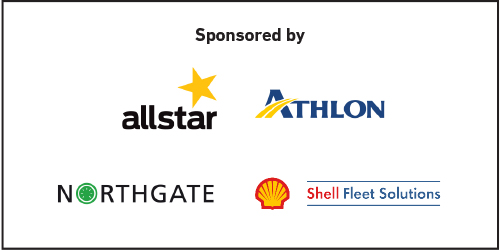







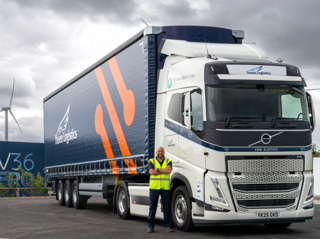




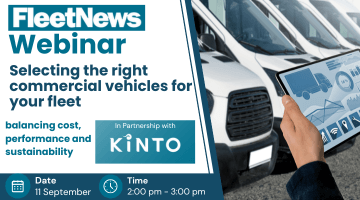




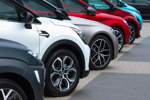


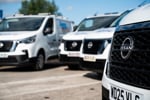



Login to comment
Comments
No comments have been made yet.